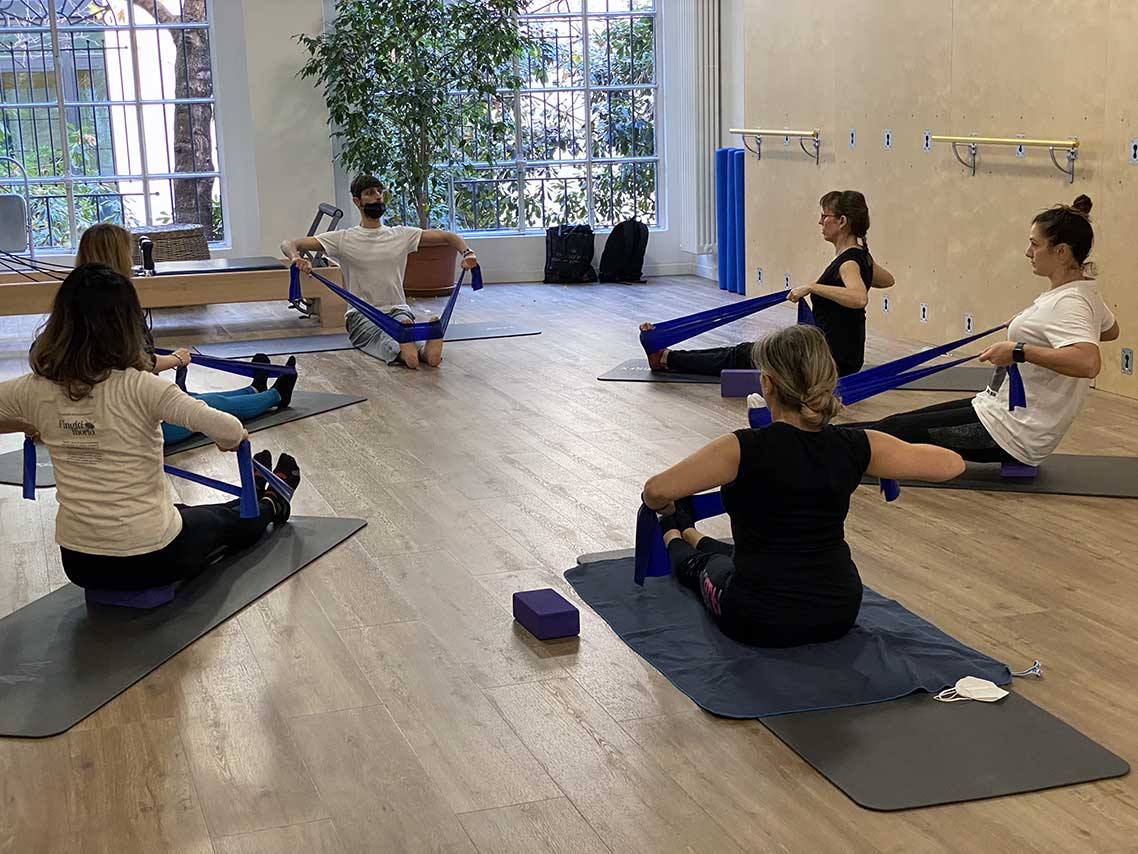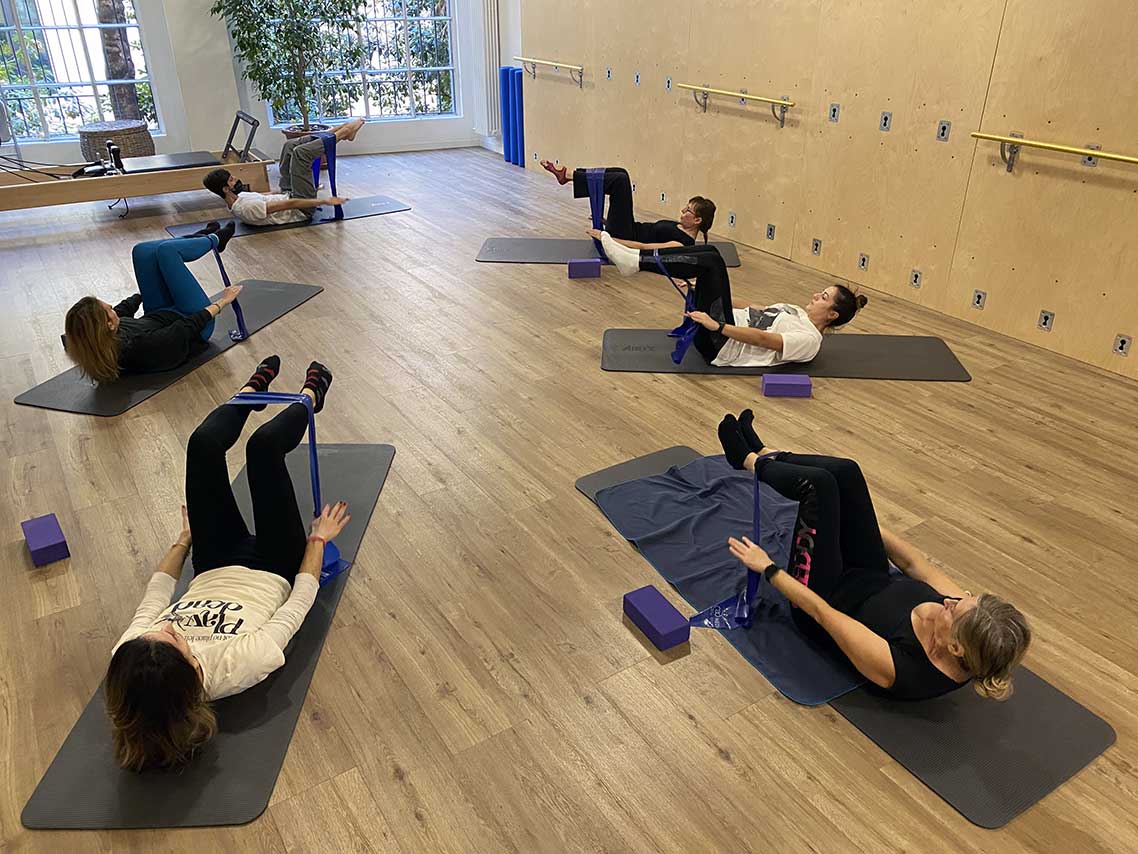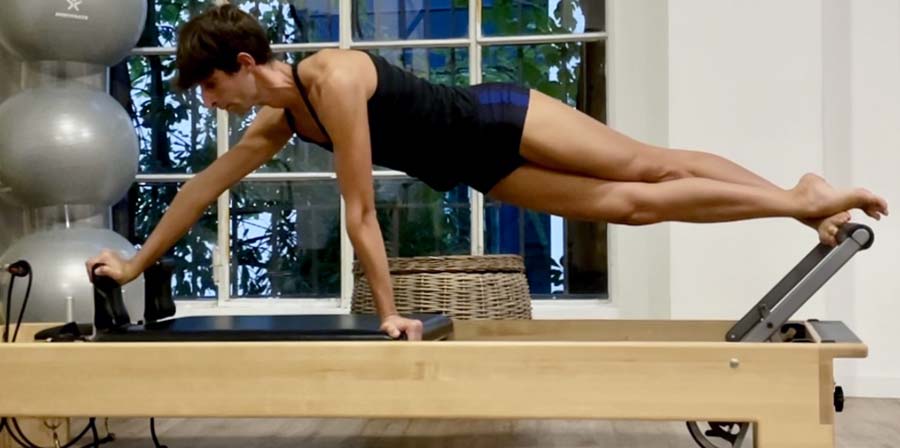The Pilates method is a training system that helps improve BODY and MIND.
« To achieve the best results within our abilities, constant work is required that allows us to strengthen our body and develop our mind as much as possible. »
- J.H. Pilates - “Return to life through Contrology”
Contrology was in fact the name that Pilates chose to give to this technique, or "Art of Control", with reference to the way in which the method encourages the use of the mind to control the muscles so that the movement is precise and fluid. Those who practice Pilates are therefore never a spectator of themselves, but actively participate in what they are doing.
Brief notes on the birth of the Pilates method
This method, to which Joseph Pilates devoted his entire life, draws on different disciplines that he himself practiced to overcome numerous ailments from which he was suffering as a child. During his captivity during the First World War he continued to practice his exercise program and also taught them to other prisoners.
From the need to carry out the exercises in a small space (probably the space occupied by a mat), a section of his program was born, now known as MAT WORK: a series of free body exercises carried out on a mat and which can also include the use of small tools such as soft ball, ring, foam roller and elastic band.
Later he was also commissioned to deal with the rehabilitation of soldiers wounded during military actions, and this led him to develop his first insights into the use of springs to stimulate the muscles. In fact, the current large tools came to life from those hospital beds with the aim of facilitating the execution of certain movements. Among the most commonly used is the REFORMER which of course you will also find in our studio.
After the war he migrated to America where he opened his first studio with his wife Clara, attracting the attention of a large number of characters including circus performers, gymnasts and athletes. But it was the members of the dance community, deeply aware of the mechanisms of the human body, who recognized the value of the system developed by Pilates. The great choreographer George Balanchine called him the "genius of the body".
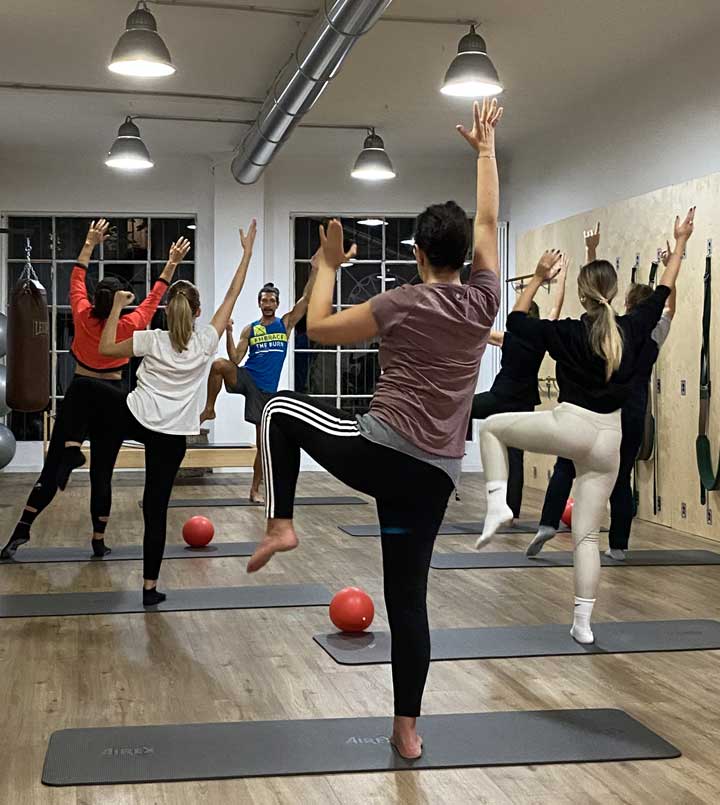 The method is based on the following key points:
The method is based on the following key points:
- Breathing
« With the breath life begins and ends. Let's learn to breathe correctly » - J. H. Pilates -
Breathing correctly while performing the exercises helps to activate the abdominal belt more effectively, avoiding unnecessary tension; promotes better blood oxygenation; gives an internal rhythm to movement and, last but not least, promotes concentration by calming the mind and body. - Concentration
« The most important thing is not what you are doing, but how you are doing what you do » - J. H. Pilates -
Good concentration during practice allows you to develop awareness, perception of your body and perception of the alignment between the various parts that make it up. - Center of gravity
The center of gravity represents the fulcrum of the Pilates method. He defined POWERHOUSE ("center of force"): an area between the final part of the rib cage and the pelvis and its conscious control allows the execution of movements in complete safety. - Control
« Using Contrology, first of all you can consciously acquire complete control of your body and then, through adequate repetition of its exercises, gradually and progressively acquire that natural rhythm and coordination. » - J. H. Pilates -
Initially, the acquisition of movement control takes place through a conscious process made of continuous practice and, in this phase, the teacher guides the student along this path. Going on, sometimes for years and with several hundred repetitions, the control of the movement will take on more and more the naturalness that is typical of the animal world. - The precision
Accuracy is the basis of a correct approach to body work. If each movement is performed with precision, the work will be felt more deeply and the tone will be balanced in every muscle region, that is translated, in everyday life, into grace and economy of movement. - The fluidity
Fluidity excludes any type of rigidity and provides for an execution that is neither too fast nor too slow. From a physiological point of view we can consider fluidity as the perfect timing of muscle recruitment. Each movement should not be perceived as the beginning and the end, but must be performed continuously. In its finest form Pilates is "poetry in motion".
Benefits of Pilates:
« Fitness is the first requirement for happiness »
- J.H. Pilates -
- Thus begins Return to Life, a text published by Pilates in 1945. What he meant by his statement is that mind and body are inextricably linked to the point of influencing each other. This method develops physical fitness in all its aspects: strength, flexibility, speed, agility, coordination and endurance.
- It improves body awareness and control, corrects posture and alignment. By focusing on breathing, it facilitates the functioning of internal organs as well as promoting relaxation and the release of tension; It shapes the body by distributing body mass in a more pleasing way from an aesthetic point of view (favors a flat stomach for example).
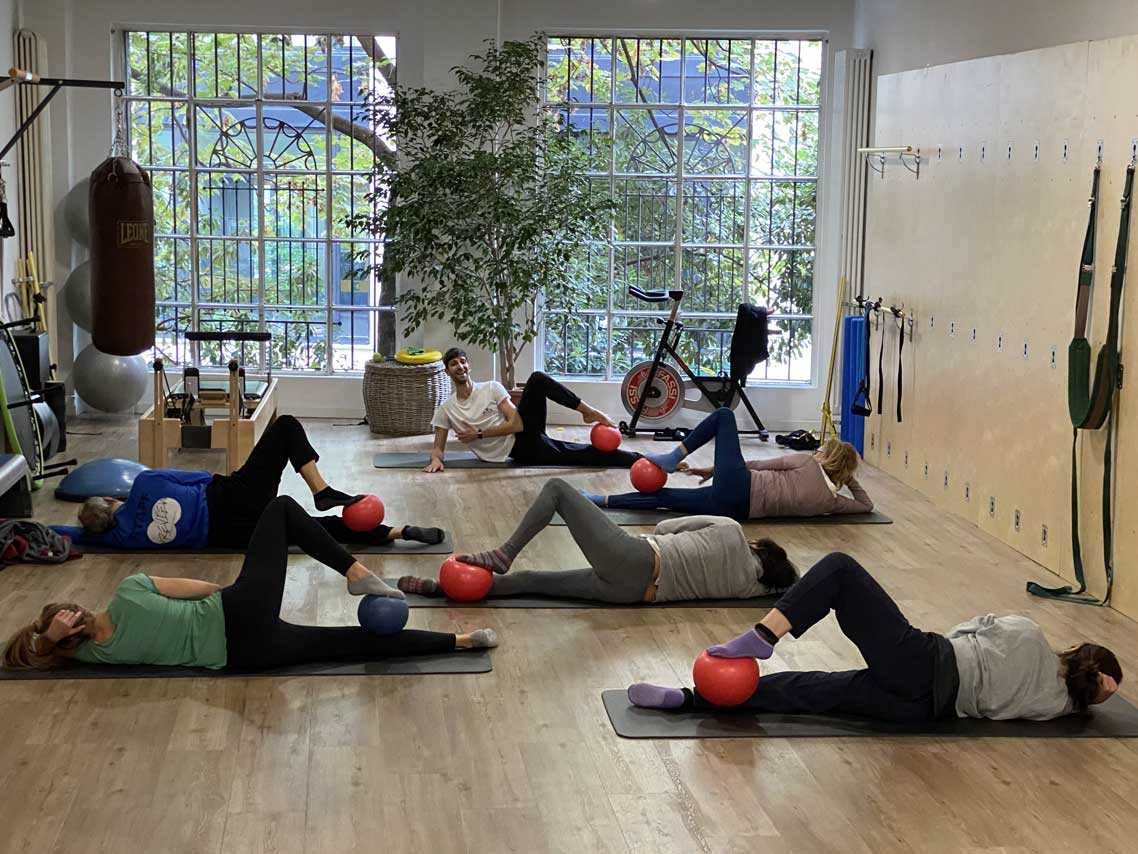
Pilates is suitable for all ages, there are no contraindications!
Is Pilates for everyone? Sure!
When the Pilates method made its appearance in Italy it was essentially conceived as a rehabilitation activity and, in the field of fitness, as a niche discipline mostly linked to the world of dance. Today it is still used by athletes, gymnasts, dancers and sportsmen in general as transversal training, very useful for the prevention of injuries or to aid recovery. It is certainly suitable for those who practice an asymmetrical sport such as volleyball or tennis.
Afterwards, with the introduction of the concept of Wellness, the first "Gyms" were born that offer a different approach to physical exercise intended more as a balanced and complete well-being that becomes a lifestyle. So little by little the method approaches a new target audience, such as the many people who suffer from back pain and the not so young. Pilates in fact helps to improve the incorrect posture of young and old and is indicated for preventing and treating back pain, thanks to the correct muscle activation and the right balance between strength and elasticity.
It is very effective for the treatment of various pathologies of the spine, such as scoliosis, and a valid rehabilitation tool often combined with the physiotherapy field able to facilitate the recovery of patients after an injury or surgery, as well as optimizing functionality in those suffering from chronic diseases.
In summary, thanks to its extreme adaptability, this training system can really be offered to everyone.
Membership reservations
For more information and request a trial lesson
